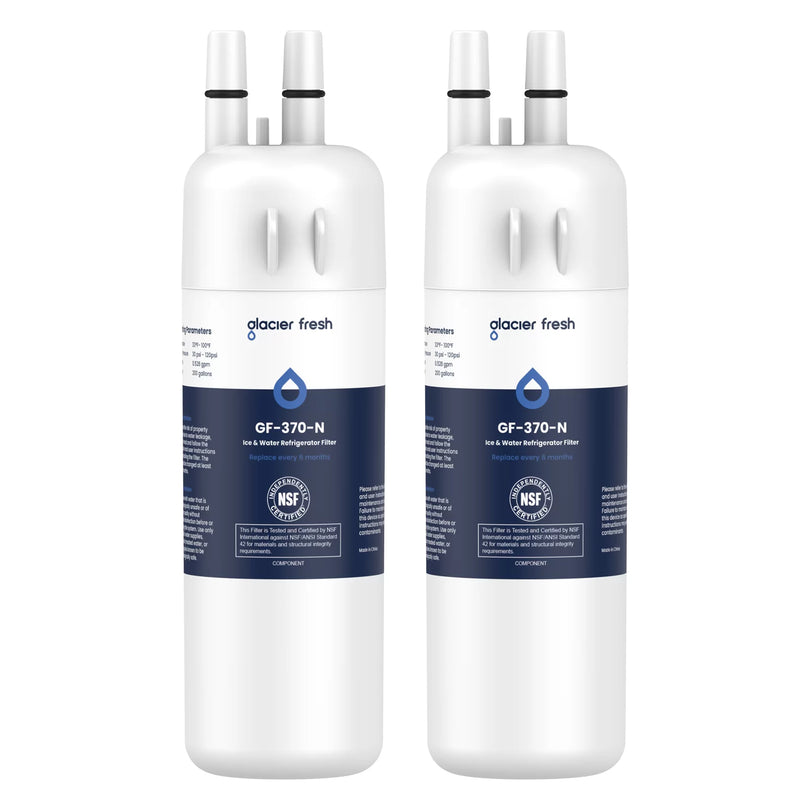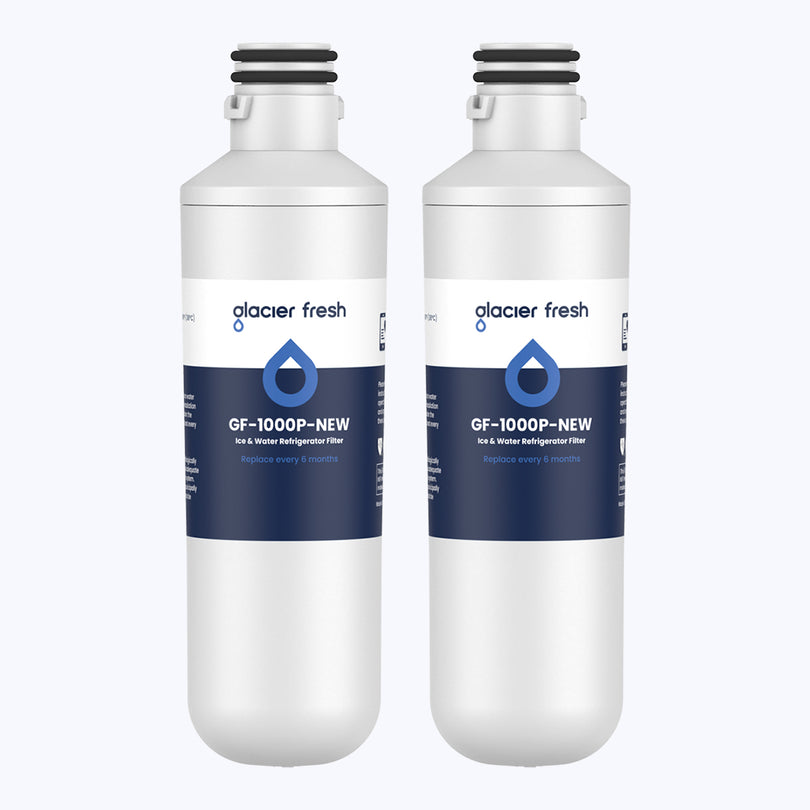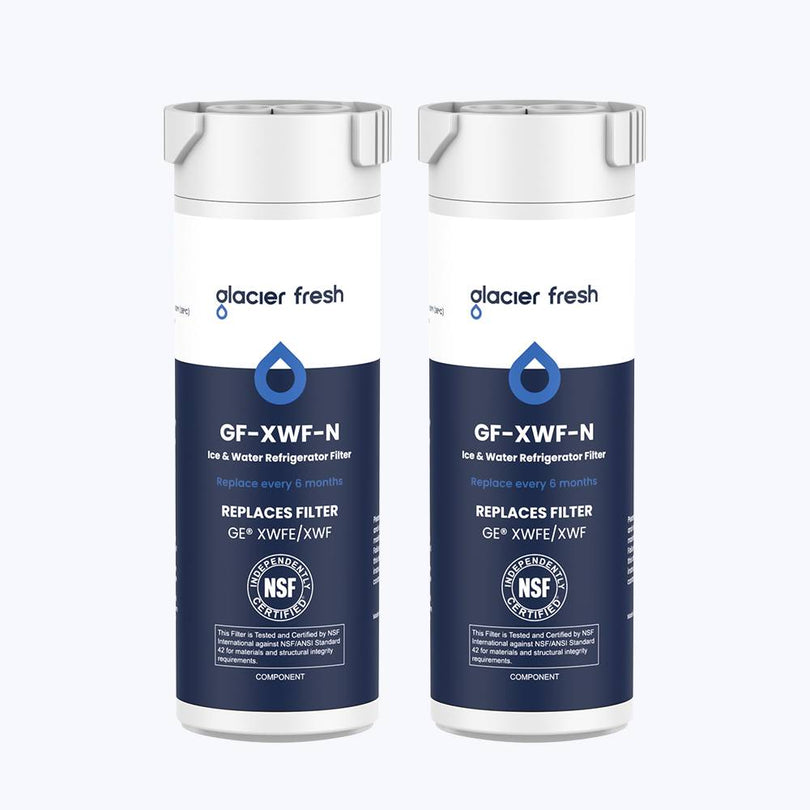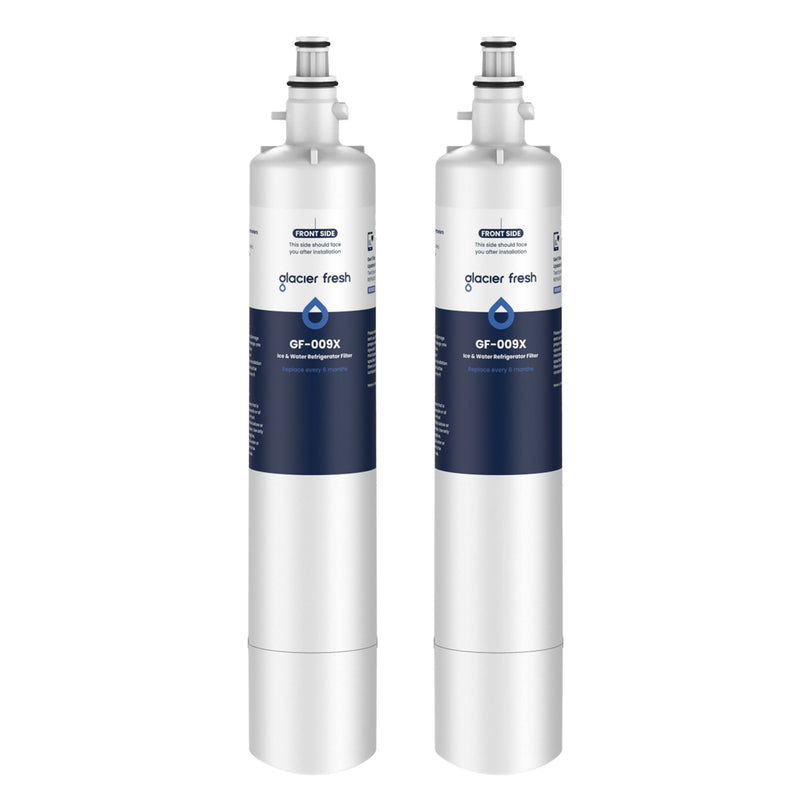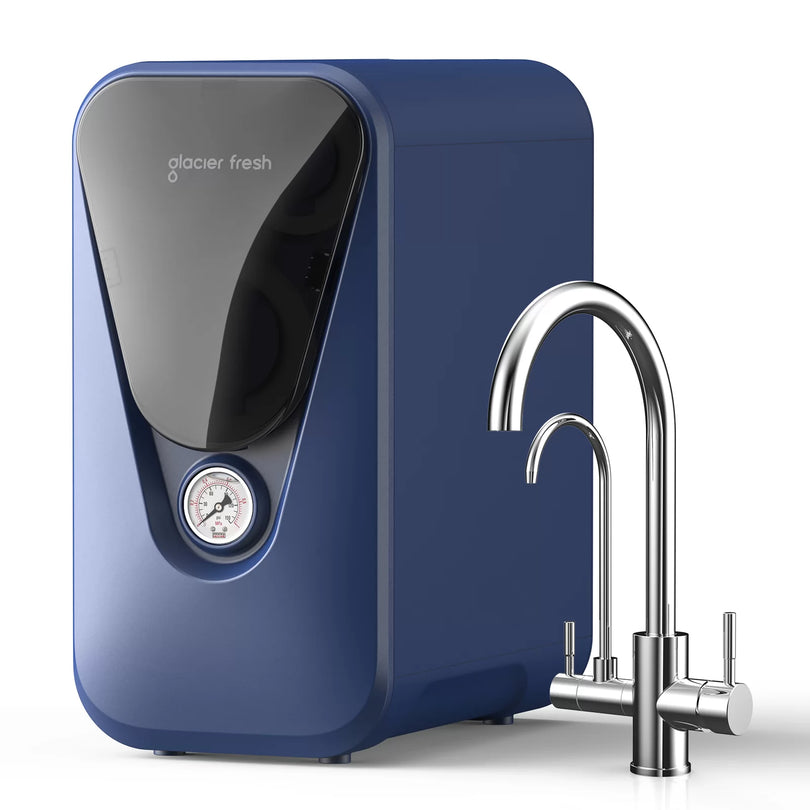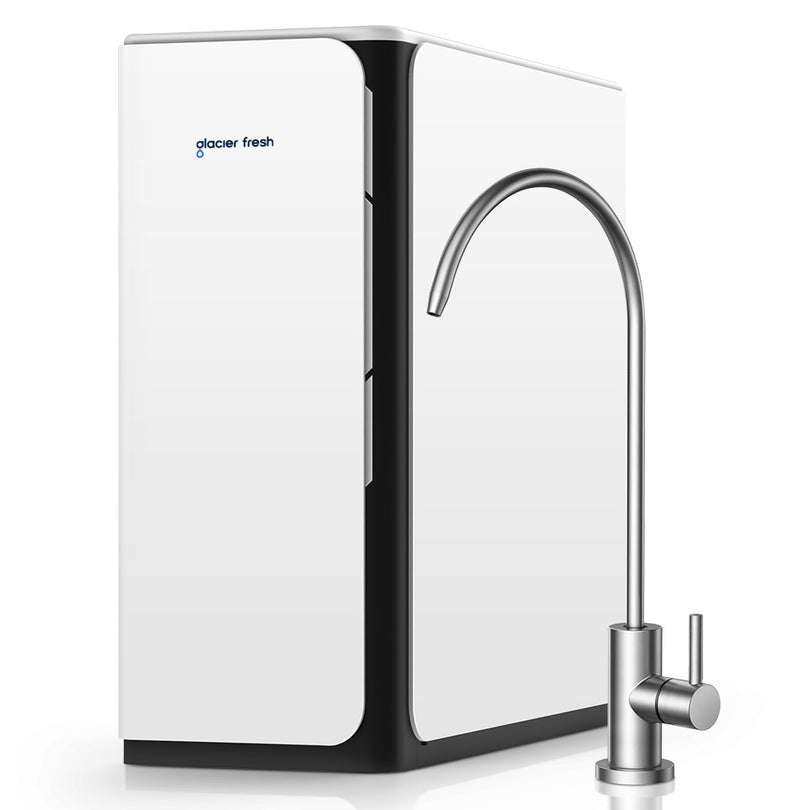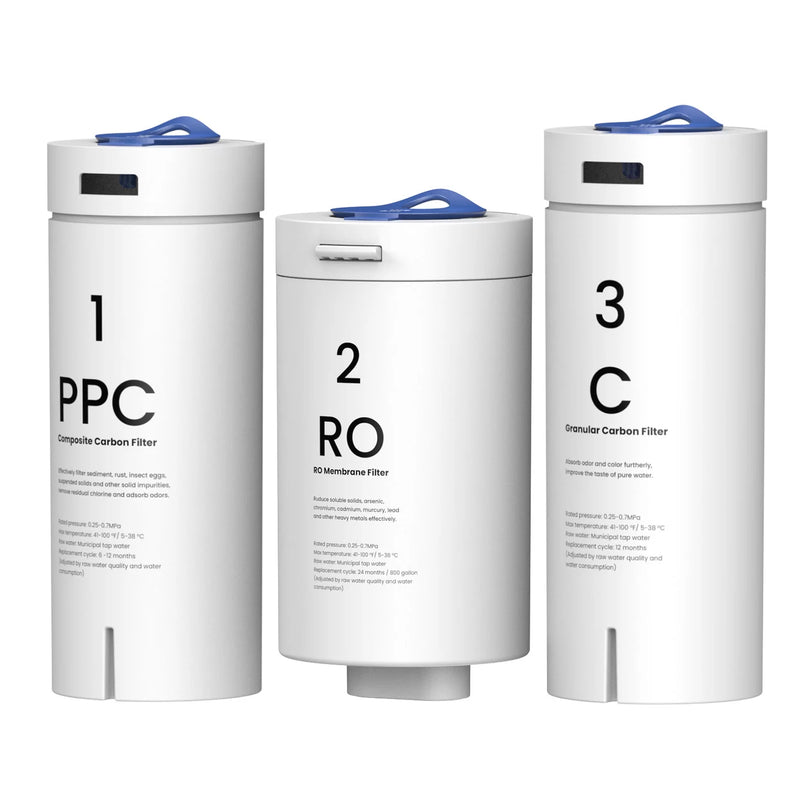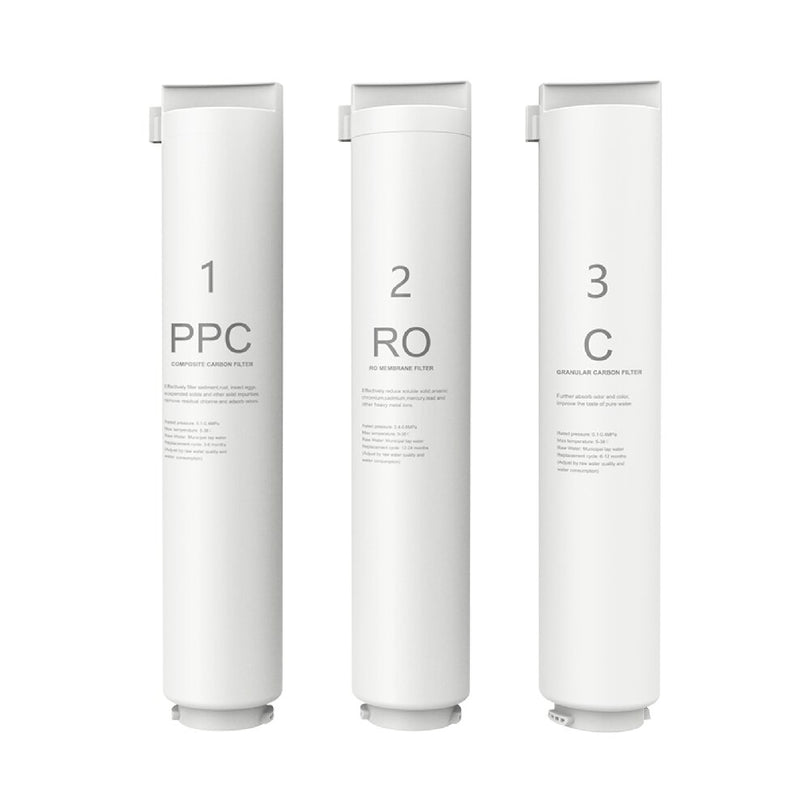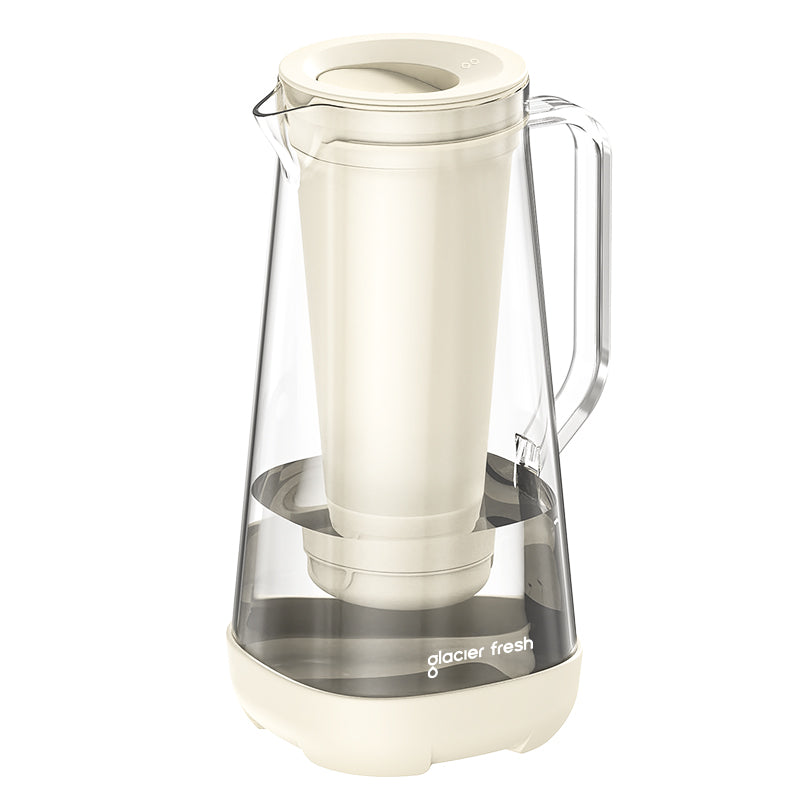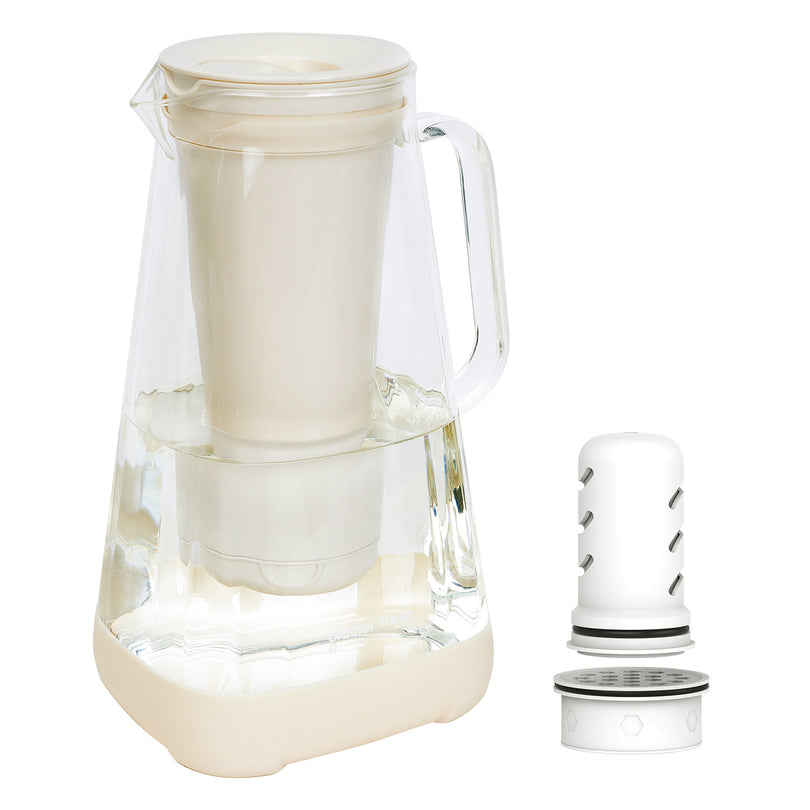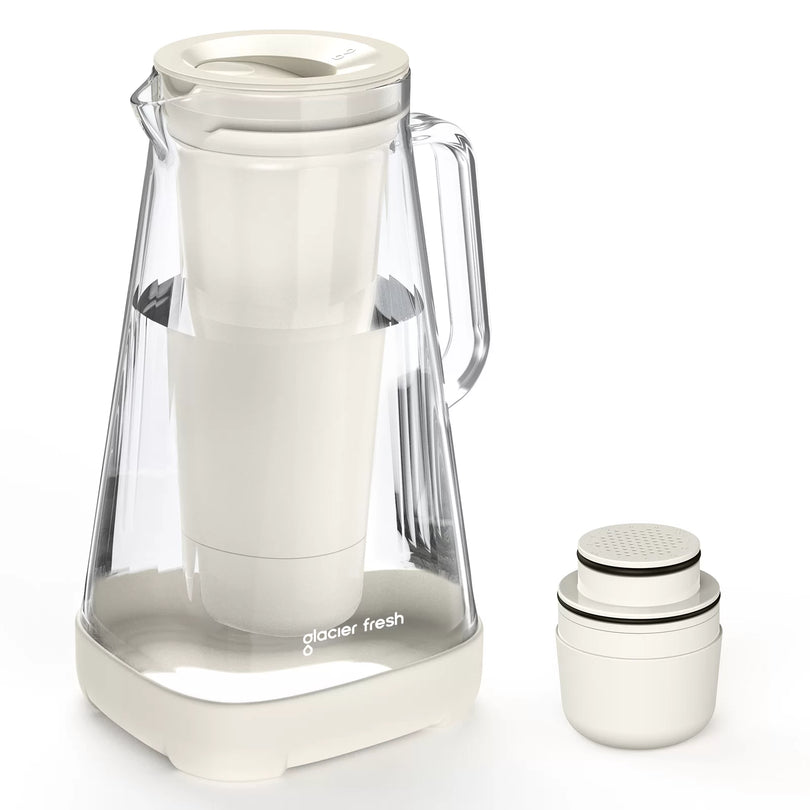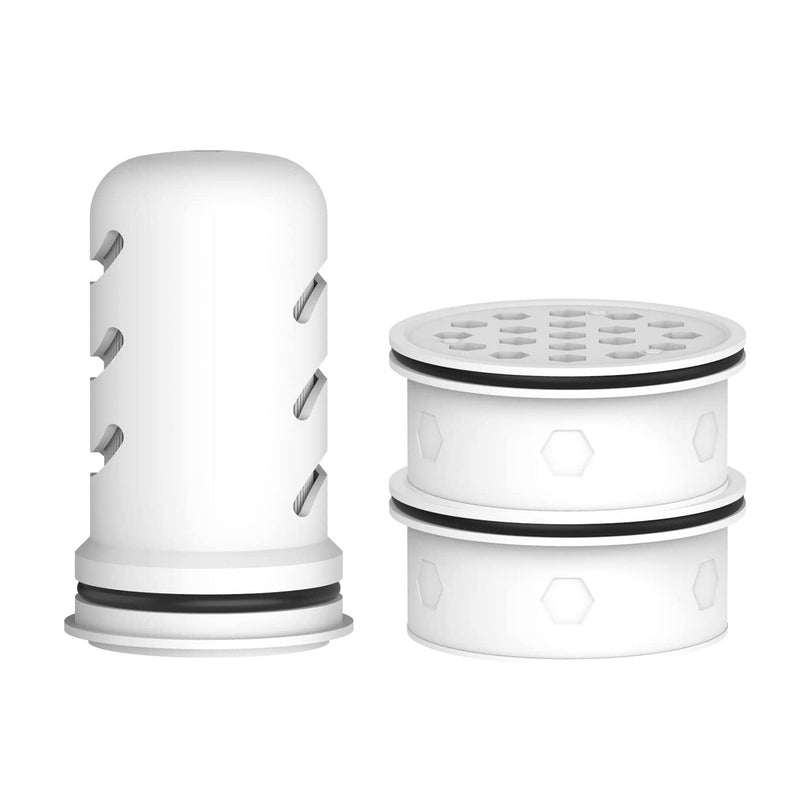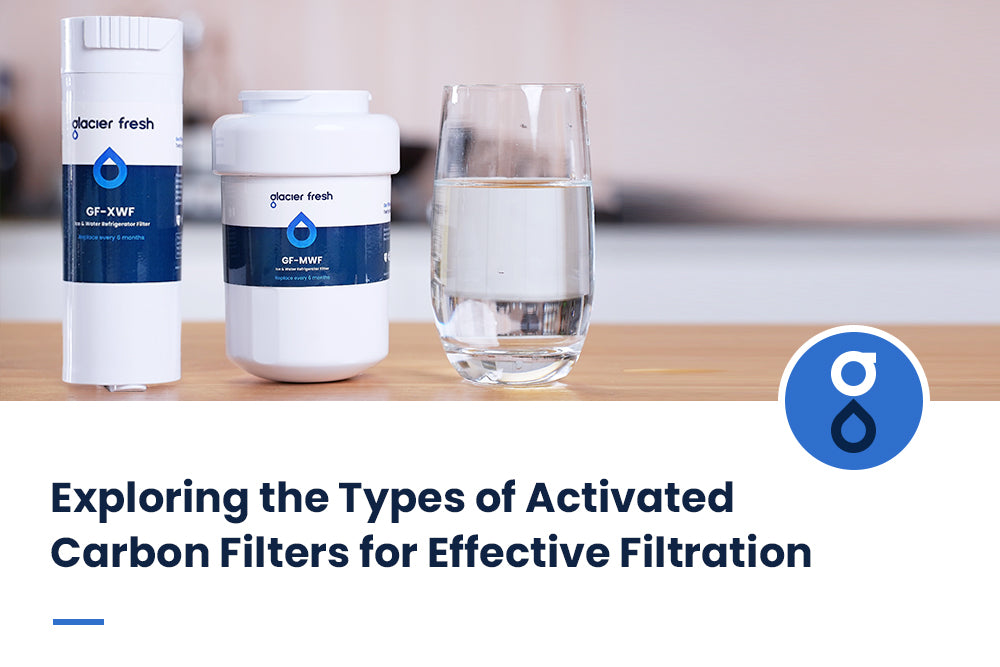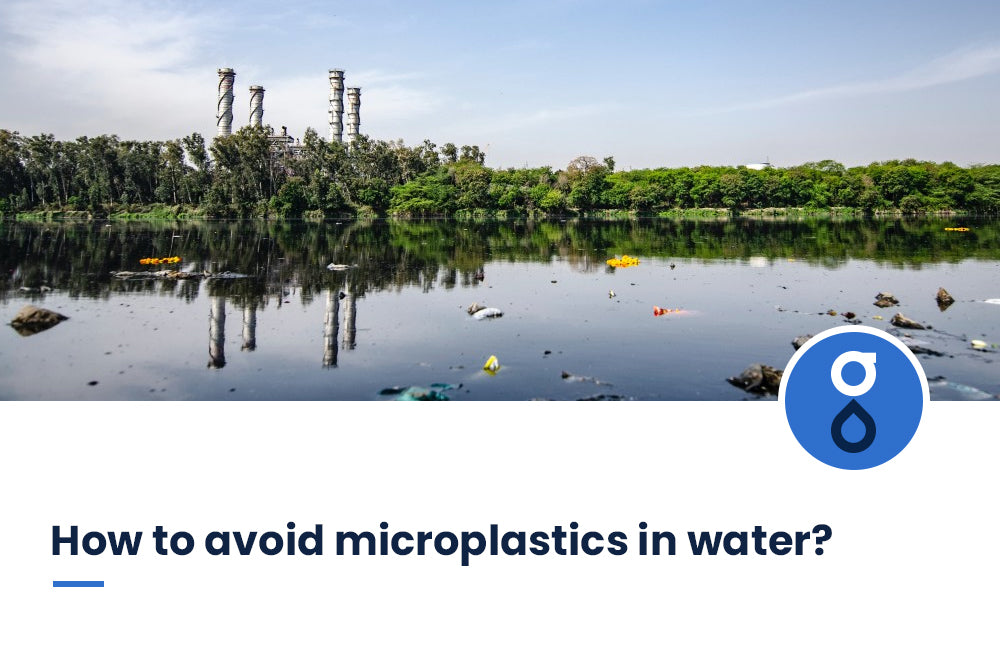Table of Contents:
Was Sie über PFAS wissen müssen – ewige Chemikalien
Quellen von PFAS im Leitungswasser
Wie werden PFAS im Trinkwasser reguliert?
Wie erkenne ich, ob mein Trinkwasser PFAS enthält?
Wie kann ich PFAS in meinem Wasser loswerden?
Abschluss
Sie fragen sich vielleicht, ob das Leitungswasser in Ihrem Haus PFAS enthält, die allgemein als „ewige Chemikalien“ bekannt sind. Diese Chemikalien sind aufgrund ihrer möglichen gesundheitlichen Auswirkungen und ihrer langfristigen Umweltpräsenz besonders besorgniserregend. In diesem Artikel besprechen wir, was Sie über PFAS wissen müssen, die Quellen von PFAS im Leitungswasser, wie es im Trinkwasser reguliert wird und wie Sie es aus Ihrer Versorgung entfernen können. Wir beantworten auch einige häufig gestellte Fragen zur PFAS-Verunreinigung. Lesen Sie also weiter, um mehr zu erfahren, damit Sie fundierte Entscheidungen bezüglich der Sicherheit Ihres Trinkwassers treffen können.
Was Sie über PFAS wissen müssen---Forever Chemicals

PFAS , auch bekannt als „ewige Chemikalien“, ist eine Gruppe künstlicher Chemikalien, die seit den 1940er Jahren in Produkten weit verbreitet sind. Sie sind in der Umwelt persistent und abbauresistent. Aufgrund ihrer potenziellen gesundheitsschädlichen Auswirkungen bei langfristiger Exposition und ihrer Umweltauswirkungen werden zunehmend Tests auf PFAS durchgeführt. Es gibt viele Quellen für PFAS-Verunreinigungen, darunter Industrieanlagen, militärische Feuerwehrübungsplätze, Kläranlagen, Mülldeponien und Verbraucherprodukte wie antihaftbeschichtetes Kochgeschirr und Fleckenschutzmittel. Wasserfiltration ist eine Möglichkeit, das Expositionsrisiko zu verringern, indem die im Trinkwasser vorhandenen PFAS-Werte entfernt oder gesenkt werden. Jeder muss über dieses Thema informiert bleiben, um zu entscheiden, wie er sich und seine Familie am besten vor den mit der PFAS-Exposition verbundenen Risiken schützen kann. Das Verständnis der PFAS-Quellen im Leitungswasser wird uns helfen, weitere Wege zur Bekämpfung dieses wachsenden Problems zu finden.
Quellen von PFAS im Leitungswasser
PFAS können auf verschiedenen Wegen in unsere Wasserversorgung gelangen. Industrieanlagen, die PFAS-haltige Produkte herstellen, verwenden oder entsorgen, können diese Chemikalien in die Umwelt freisetzen. Kläranlagen, die industrielles oder häusliches Abwasser aufnehmen, können unsere Wasserversorgung ebenfalls verunreinigen. Deponien, die PFAS-haltigen Abfall aufnehmen, können ebenfalls eine Kontaminationsquelle sein. Feuerlöschschaum mit PFAS wird häufig bei Trainingsübungen und in Notfällen eingesetzt, beispielsweise bei Bränden auf Flughäfen oder Militärstützpunkten. Bei Verwendung können diese Schäume nahe gelegene Bäche, Flüsse und das Grundwasser verunreinigen und so unser Trinkwasser verunreinigen. Darüber hinaus können auch Verbraucherprodukte wie Lebensmittelverpackungen, Zahnseide und Haushaltsreiniger eine Quelle von PFAS in unserem Leitungswasser sein. PFAS kann aus diesen Produkten auslaugen und über das Abwasser in unsere Wasserversorgung gelangen.
Ein großes Problem bei PFAS ist die Bioakkumulation. Diese Chemikalien zersetzen sich nicht schnell und können sich im Laufe der Zeit in der Umwelt und in unserem Körper ansammeln. Daher können PFAS ein potenzielles Gesundheitsrisiko darstellen, da sie langsam in unseren Körper gelangen und zu gesundheitsschädlichen Auswirkungen wie Schilddrüsenerkrankungen, Leberschäden und Hodenkrebs führen können. Um den PFAS-Gehalt im Leitungswasser zu überwachen, sind Tests unerlässlich. Leitungswasserproben können entnommen und in spezialisierten Labors analysiert werden, um PFAS-Konzentrationen festzustellen. Wasserversorgungsunternehmen müssen den PFAS-Gehalt in Trinkwasserquellen überwachen, um festzustellen, ob die Belastung innerhalb der sicheren Belastungsgrenzen liegt. Darüber hinaus empfiehlt das Gesundheitsamt, die PFAS-Konzentration im Leitungswasser regelmäßig zu überwachen, um sicherzustellen, dass es gesund und für den Verzehr unbedenklich ist.
Wie werden PFAS im Trinkwasser reguliert?
Die Environmental Protection Agency (EPA) reguliert PFAS im Trinkwasser durch den Safe Drinking Water Act . Die EPA hat einen Gesundheitsempfehlungswert von 70 Teilen pro Billion (ppt) für zwei Arten von PFAS festgelegt: Perfluoroctansäure (PFOA) und Perfluoroctansulfonsäure (PFOS). Wenn die PFOA- und PFOS-Werte in einem öffentlichen Wassersystem 70 ppt erreichen oder überschreiten, empfiehlt die EPA Maßnahmen zur Reduzierung der Belastung. Es ist jedoch wichtig zu beachten, dass dieser Wert nicht durchsetzbar ist und nur als Richtlinie für sichere Belastungswerte dient.

Einige Bundesstaaten haben strengere Richtlinien für PFAS im Trinkwasser festgelegt. So hat Vermont beispielsweise einen Grenzwert von 20 ppt für fünf PFAS-Verbindungen festgelegt, während New Hampshire einen Grenzwert von 12 ppt für PFOA und 15 ppt für PFOS festgelegt hat. Diese staatlichen Richtlinien spiegeln den aktuellen Kenntnisstand über sichere Expositionsniveaus wider und dienen dazu, die öffentliche Gesundheit vor möglichen nachteiligen Auswirkungen zu schützen. Neben der Regulierung von PFAS im Trinkwasser arbeitet die EPA auch daran, die PFAS-Kontamination aus anderen Quellen wie Lebensmittelverpackungen, Zahnseide und Feuerlöschschaum zu reduzieren. PFAS kann auch in Verbraucherprodukten und Produktionsanlagen gefunden werden. Aufgrund der möglichen gesundheitlichen Bedenken hat die Regulierung von PFAS im Trinkwasser für Regierungsbehörden und Gesundheitsämter höchste Priorität. Es werden strenge Vorschriften und Richtlinien umgesetzt, um sauberes und sicheres Trinkwasser für alle Menschen sicherzustellen.
Wie erkenne ich, ob mein Trinkwasser PFAS enthält?
Wenn Sie sich nicht sicher sind, ob Ihr Trinkwasser sicher ist, erfahren Sie hier, wie Sie feststellen können, ob es PFAS enthält.
Überprüfen Sie zunächst Ihren Consumer Confidence Report (CCR). Ihr Wasserversorger ist gesetzlich verpflichtet, jedes Jahr einen CCR bereitzustellen, in dem die Schadstoffwerte in Ihrem Trinkwasser, einschließlich PFAS, aufgeführt sind. Dieser Bericht sollte auf der Website Ihres Wasserversorgers leicht zugänglich sein, oder Sie können eine Kopie bei Ihrem örtlichen Wasserversorger anfordern. Wenn Sie PFAS in Ihrem CCR aufgeführt finden, ist es wichtig, dass Sie sich an Ihr Gesundheitsamt oder Ihre Umweltbehörde wenden. Diese werden Sie über die nächsten Schritte informieren und Ihnen möglicherweise weitere Tests oder Maßnahmen zum Schutz Ihrer Gesundheit empfehlen.
Eine weitere Möglichkeit, Ihr Trinkwasser auf PFAS zu testen, besteht darin, ein Wassertestkit zu kaufen oder eine Wasserprobe zur Analyse an ein Labor zu schicken. Diese Kits sind in vielen Baumärkten oder Eisenwarenläden erhältlich und einfach zu verwenden. Die meisten Labore stellen schriftliche Ergebnisse ihrer Untersuchungen zur Verfügung; einige bieten möglicherweise sogar Empfehlungen zur Reduzierung Ihrer PFAS-Belastung. Es ist wichtig zu beachten, dass PFAS in Leitungswasser und Flaschenwasser enthalten sein können. Flaschenwasserhersteller sind nicht verpflichtet, offenzulegen, ob ihre Produkte PFAS enthalten. Daher wird empfohlen, dass Sie Ihren CCR überprüfen oder unabhängige Tests durchführen, um die Sicherheit Ihres Trinkwassers zu gewährleisten.
Wie kann ich PFAS aus meinem Wasser entfernen?
Wenn Sie über eine PFAS-Verunreinigung des Leitungswassers besorgt sind, stehen Ihnen mehrere Möglichkeiten zur Beseitigung dieser schädlichen Chemikalien zur Verfügung.
Installation eines Umkehrosmose-Wasserfilters

Die Installation eines Umkehrosmosefilters kann dazu beitragen, Verunreinigungen aus Ihrem Wasser fernzuhalten. Ein Umkehrosmose-Wasserfilter ist eine DIY-Lösung für Menschen, die den Kontakt mit PFAS-Chemikalien in ihrem Trinkwasser vermeiden möchten. Die Prüfung der PFAS-Werte in Ihrem Trinkwasser ist der erste Schritt, um festzustellen, ob ein Umkehrosmosefilter eine geeignete Lösung ist. Der Filter muss regelmäßig ausgetauscht werden, um eine nachhaltige Nutzung zu gewährleisten. Wenn Sie die Anweisungen des Herstellers befolgen und den Filter gemäß den Anweisungen austauschen, bleibt das System optimal funktionsfähig.
Der Umkehrosmosefilter ist eine großartige Alternative zur chemischen Behandlung des Wassers von PFAS. Es sollten jedoch auch andere Optionen in Betracht gezogen werden, wie z. B. das Abkochen des Wassers oder die Verwendung eines Kohlefilters . Jede Alternative hat ihre eigenen Vor- und Nachteile, und die am besten geeignete Option hängt von der Situation ab. Es ist wichtig zu verstehen, dass kein Wasserfiltersystem 100 % wirksam ist, sodass auch mit einem Umkehrosmosefilter einige PFAS im Wasser verbleiben können. Es ist wichtig, sich der mit PFAS verbundenen Risiken bewusst zu sein und entsprechende Vorsichtsmaßnahmen zu treffen.
Verwendung von Filtern mit körniger Aktivkohle (GAC)
GAC-Filter sind eine Art Behandlungsmethode am Einsatzort, die zur Reduzierung des PFAS-Gehalts im Trinkwasser eingesetzt wird. Vor dem Einbau eines GAC-Filters ist ein PFAS-Test unerlässlich, da der Schadstoffgehalt bekannt sein muss, um sicherzustellen, dass der Filter die richtige Größe für die Aufgabe hat. GAC-Filter werden mit anderen Behandlungsverfahren wie Koagulation und aktivierter Tonerde kombiniert, um sicherzustellen, dass der PFAS-Gehalt auf ein sicheres Niveau gesenkt wird.

In Kombination mit anderen Aufbereitungsverfahren können GAC-Filter dazu beitragen, den PFAS-Gehalt im Wasser auf ein sicheres Niveau zu senken. Es ist jedoch wichtig, daran zu denken, dass diese Filter ordnungsgemäß gewartet und regelmäßig gewechselt werden müssen, um optimal zu funktionieren. Darüber hinaus ist es wichtig, die Öffentlichkeit über die Verwendung und Wartung von GAC-Filtern aufzuklären, um sicherzustellen, dass die Öffentlichkeit die Vorteile und Risiken der Verwendung dieser Filter kennt. Die Installation eines GAC-Filters ist ein wichtiger erster Schritt zur Beseitigung von PFAS aus Ihrer Wasserversorgung. Indem Sie auf PFAS testen, einen Filter der richtigen Größe installieren und sich selbst und die Öffentlichkeit über seine Verwendung und Wartung informieren, können Sie sicher sein, dass Ihr Trinkwasser frei von diesen Schadstoffen ist.
Produkte mit PFAS vermeiden

Wenn Sie sich über die von Ihnen verwendeten Produkte informieren, können Sie PFAS vermeiden und Ihre Familie schützen. Eine Möglichkeit besteht darin, den Kontakt von Kunststoffen mit Lebensmitteln und Wasser zu verhindern. Entscheiden Sie sich nach Möglichkeit für Behälter aus Glas, Edelstahl oder anderen Metallen. Vermeiden Sie beispielsweise Plastikbeutel, -verpackungen und Wasserflaschen. Überprüfen Sie beim Lebensmitteleinkauf die Etiketten, um sicherzustellen, dass die Lebensmittel PFAS-frei sind. Gehen Sie noch einen Schritt weiter und vermeiden Sie den Kauf von Lebensmitteln in Verpackungen, die nicht leicht recycelbar sind.
Eine weitere Möglichkeit, den Kontakt mit PFAS zu reduzieren, besteht darin, Essen zum Mitnehmen und Fast Food zu vermeiden. Viele Behälter zum Mitnehmen sind mit PFAS ausgekleidet, daher ist es am besten, sie nach Möglichkeit zu vermeiden. Wenn Sie Essen zum Mitnehmen kaufen, entscheiden Sie sich für Behälter, die aus Karton bestehen und recycelt werden können. Versuchen Sie außerdem, antihaftbeschichtete Pfannen und anderes Kochgeschirr zu vermeiden. Halten Sie sich nach Möglichkeit an Kochgeschirr aus Edelstahl und Gusseisen. Wenn Sie nach Möglichkeiten suchen, Ihren Kontakt mit PFAS zu reduzieren, vermeiden Sie zunächst Kunststoffe, überprüfen Sie Etiketten, vermeiden Sie Essen zum Mitnehmen, vermeiden Sie antihaftbeschichtetes Kochgeschirr und vermeiden Sie Fast Food. Diese einfachen Schritte können dazu beitragen, Ihre Familie vor der Belastung durch PFAS zu schützen.
Umstellung auf PFAS-freies Flaschenwasser
Der Umstieg auf PFAS-freies Flaschenwasser ist eine großartige Möglichkeit, Ihre Familie zu schützen – über die Hälfte des in den USA verkauften Flaschenwassers ist mittlerweile PFAS-frei! Bei der Auswahl des richtigen Flaschenwassers für Sie gibt es mehrere Optionen. Quellwasser, Brunnenwasser und gefilterte Systeme sind allesamt großartige Optionen, wenn Sie das Wasser vor dem Trinken testen können. Das Abkochen von Wasser ist auch eine hervorragende Methode zur Wasserreinigung und eine viel günstigere Option als Flaschenwasser.

Egal, für welche Option Sie sich entscheiden, Sie können sicher sein, dass Sie PFAS-freies Wasser trinken. Quellwasser ist weithin verfügbar und in den meisten Geschäften erhältlich, kann aber teuer sein. Das Wasser kann viel billiger sein, wenn Sie einen Brunnen haben, aber es muss vor dem Trinken getestet werden. Filtersysteme sind eine ausgezeichnete Option für diejenigen, die sauberes Wasser ohne den Aufwand des Abkochens wünschen, aber sie erfordern häufige Wartung. Das Abkochen von Wasser ist die wirtschaftlichste Option, kostet aber Zeit und Energie.
Der Umstieg auf PFAS-freies Flaschenwasser ist eine großartige Möglichkeit, die Gesundheit Ihrer Familie zu schützen. Sie haben verschiedene Optionen zur Auswahl, aus denen Sie diejenige auswählen können, die Ihren Bedürfnissen und Ihrem Budget am besten entspricht. Zur Qualitätssicherung ist es wichtig, das Wasser vorher zu testen, und das Abkochen ist eine effiziente und kostengünstige Lösung. Egal für welche Option Sie sich entscheiden, Sie können sicher sein, dass Ihr Trinkwasser PFAS-frei ist.
Abschluss
Sie haben gerade viel über PFAS gelernt, die ewigen Chemikalien, die im Leitungswasser vorkommen. Es ist wichtig, über ihre Existenz Bescheid zu wissen, wie sie reguliert werden und welche Schritte Sie unternehmen können, um sich vor ihnen zu schützen. Wie eine dunkle Wolke, die Ihnen folgt, können PFAS schwerwiegende gesundheitliche Folgen haben, wenn sie nicht ernst genommen werden. Deshalb ist es wichtig, informiert zu bleiben und sicherzustellen, dass Ihr Wasser frei von diesen Chemikalien ist. Wenn Sie die notwendigen Vorsichtsmaßnahmen treffen, stellen Sie sicher, dass Ihre Familie gesund bleibt und vor möglichen Gesundheitsrisiken geschützt ist, die mit PFAS im Trinkwasser verbunden sind.

